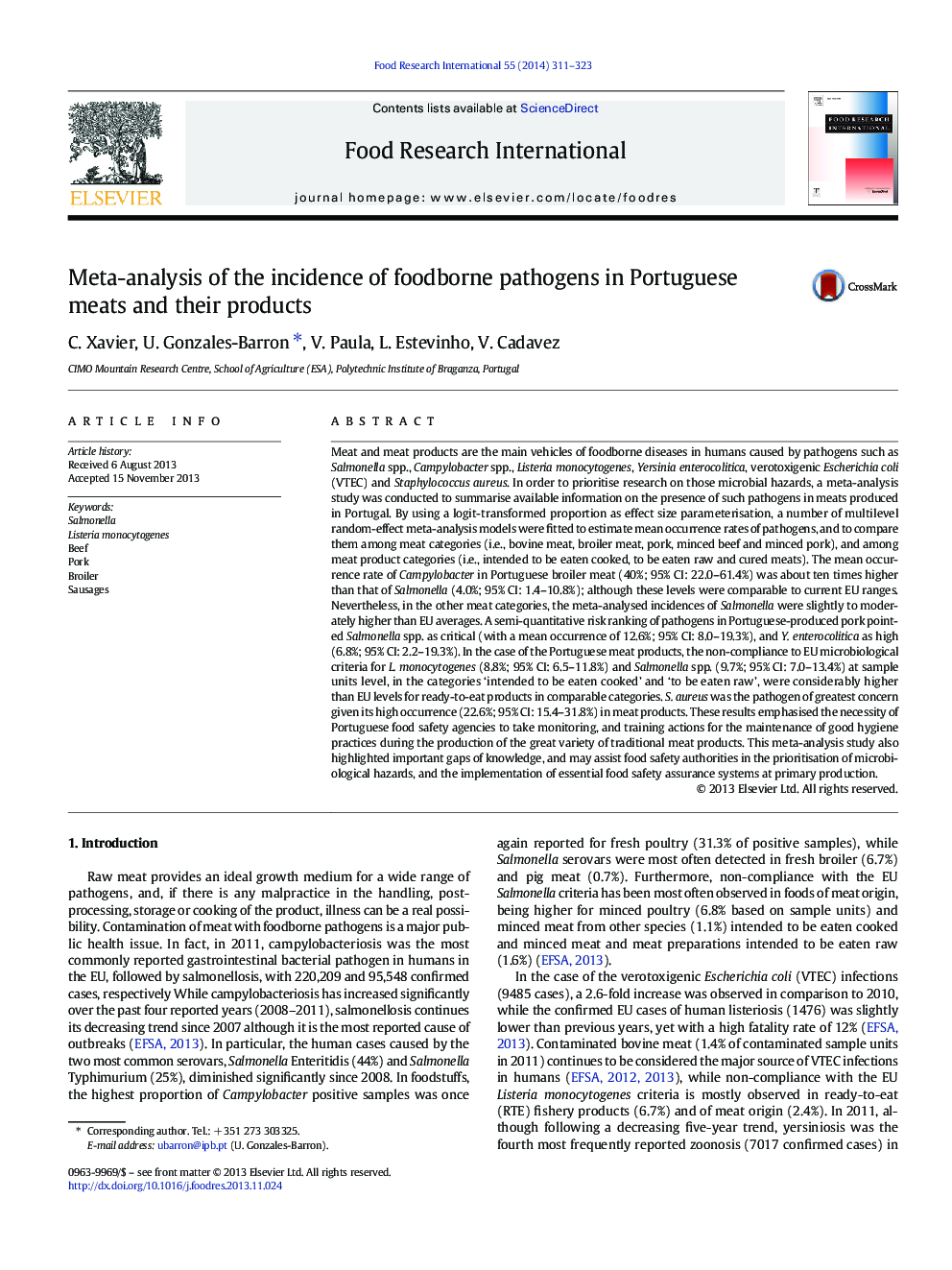| کد مقاله | کد نشریه | سال انتشار | مقاله انگلیسی | نسخه تمام متن |
|---|---|---|---|---|
| 6397913 | 1628489 | 2014 | 13 صفحه PDF | دانلود رایگان |
- The first meta-analysis on incidence of pathogens in Portuguese meats was conducted.
- Campylobacter (40%) and Salmonella (4.0%) in poultry are within current EU ranges.
- The high incidence of Salmonella in pork (12.6%) calls for on-farm control measures.
- Non-compliance of traditional meat products to microbiological criteria is high.
- S. aureus is the pathogen of greatest concern (22.6%) in traditional meat products.
Meat and meat products are the main vehicles of foodborne diseases in humans caused by pathogens such as Salmonella spp., Campylobacter spp., Listeria monocytogenes, Yersinia enterocolitica, verotoxigenic Escherichia coli (VTEC) and Staphylococcus aureus. In order to prioritise research on those microbial hazards, a meta-analysis study was conducted to summarise available information on the presence of such pathogens in meats produced in Portugal. By using a logit-transformed proportion as effect size parameterisation, a number of multilevel random-effect meta-analysis models were fitted to estimate mean occurrence rates of pathogens, and to compare them among meat categories (i.e., bovine meat, broiler meat, pork, minced beef and minced pork), and among meat product categories (i.e., intended to be eaten cooked, to be eaten raw and cured meats). The mean occurrence rate of Campylobacter in Portuguese broiler meat (40%; 95% CI: 22.0-61.4%) was about ten times higher than that of Salmonella (4.0%; 95% CI: 1.4-10.8%); although these levels were comparable to current EU ranges. Nevertheless, in the other meat categories, the meta-analysed incidences of Salmonella were slightly to moderately higher than EU averages. A semi-quantitative risk ranking of pathogens in Portuguese-produced pork pointed Salmonella spp. as critical (with a mean occurrence of 12.6%; 95% CI: 8.0-19.3%), and Y. enterocolitica as high (6.8%; 95% CI: 2.2-19.3%). In the case of the Portuguese meat products, the non-compliance to EU microbiological criteria for L. monocytogenes (8.8%; 95% CI: 6.5-11.8%) and Salmonella spp. (9.7%; 95% CI: 7.0-13.4%) at sample units level, in the categories 'intended to be eaten cooked' and 'to be eaten raw', were considerably higher than EU levels for ready-to-eat products in comparable categories. S. aureus was the pathogen of greatest concern given its high occurrence (22.6%; 95% CI: 15.4-31.8%) in meat products. These results emphasised the necessity of Portuguese food safety agencies to take monitoring, and training actions for the maintenance of good hygiene practices during the production of the great variety of traditional meat products. This meta-analysis study also highlighted important gaps of knowledge, and may assist food safety authorities in the prioritisation of microbiological hazards, and the implementation of essential food safety assurance systems at primary production.
Journal: Food Research International - Volume 55, January 2014, Pages 311-323
